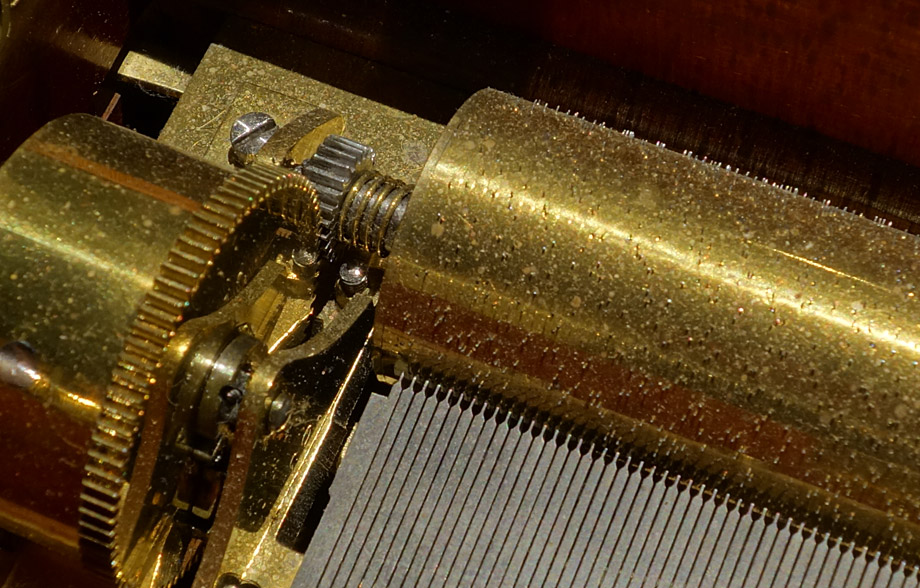THIS SWISS-MADE musical box, dating to 1840, is among the older automatic instruments in the Museum. Owen takes it out of its glass display case and lays it on an upholstered bench in the middle of the room so I can get a better look. The tiny pins on the cylinder resemble hoar frost.
The label on the inside of the lid identifies it as having being made by Nicole Freres, now the most sought-after among names such as Ducommon, Mermod Freres, Bremond, and others. Dozens of such makers once existed in and around Geneva. Faded copperplate writing on the label lists the cylinder's four tunes or 'airs'. "They're almost illegible," Owen says. "There's one tune from 'The Bohemian Girl' which is still known but the others are totally forgotten." The cylinder is fixed so new music can't be added.

Since the box is also quite small, I wonder whether this meant it was originally one of the more affordable instruments in the Museum. Owen suggests otherwise: "It's typical of a box of that age. It's fairly plain, fairly small, but I still think it would be a year's wages for an average worker. It was aimed at an upper-middle-class market."
"As the century went by, they started making musical boxes bigger because they could make bigger combs out of steel. They started employing cabinet-makers, mainly from Italy, so the boxes were in fine cabinets because they went into fine rooms."
Eventually the pin-and-cylinder technology would be replaced by that of flat steel discs used in the Polyphon and Regina musical boxes built in the late 19th century. The new discs could be made in factories by punching machines, allowed their owners to change the tunes played, and were around a tenth of the cost.
Owen tells me how some grew to monstrous proportions: "The biggest musical boxes I've seen had three discs side by side, each disc being a meter in diameter. We're talking about a wall of a room."
Introduction • Musical box • Orchestra box • Orchestrion • Violin machine • Reproducing piano






